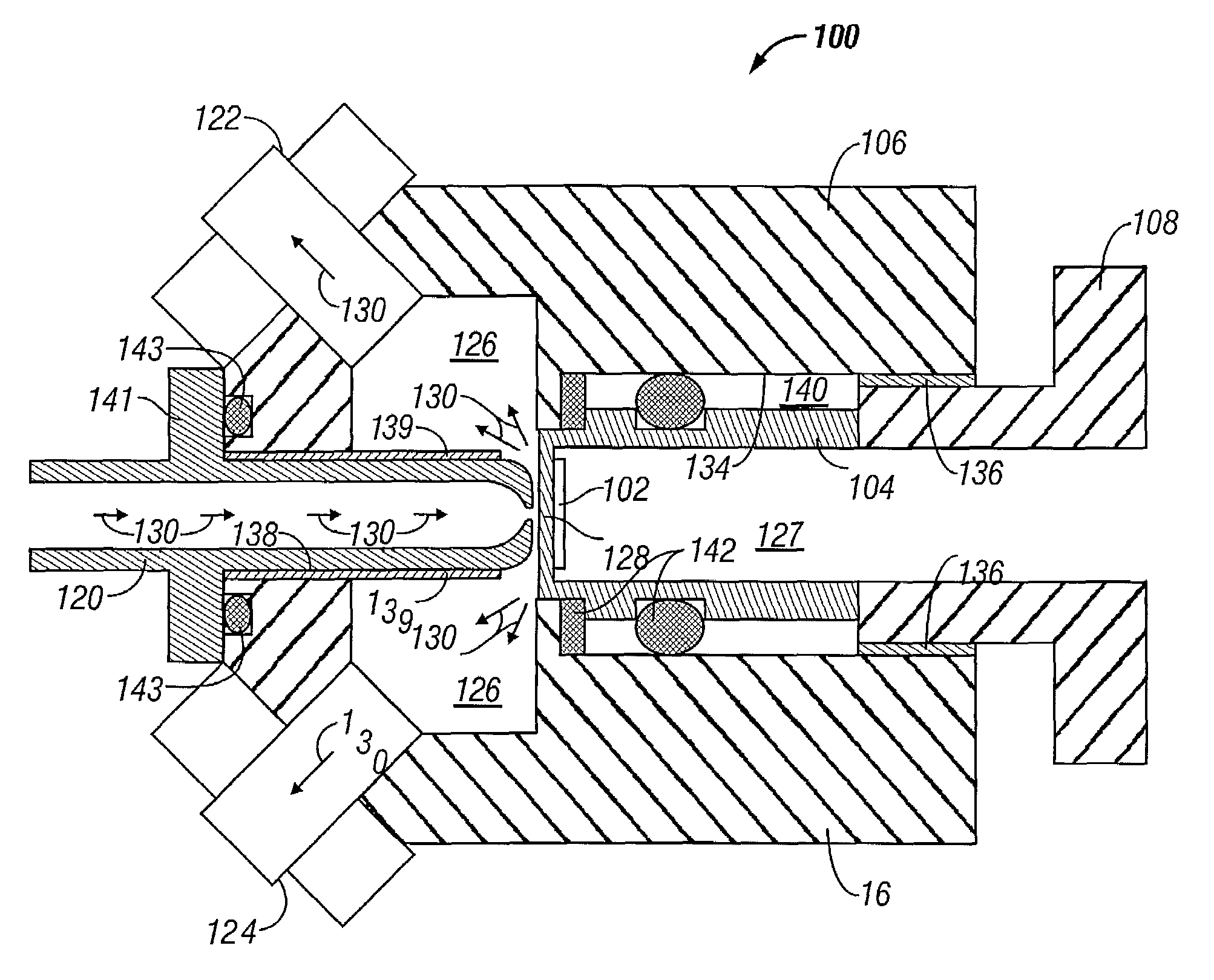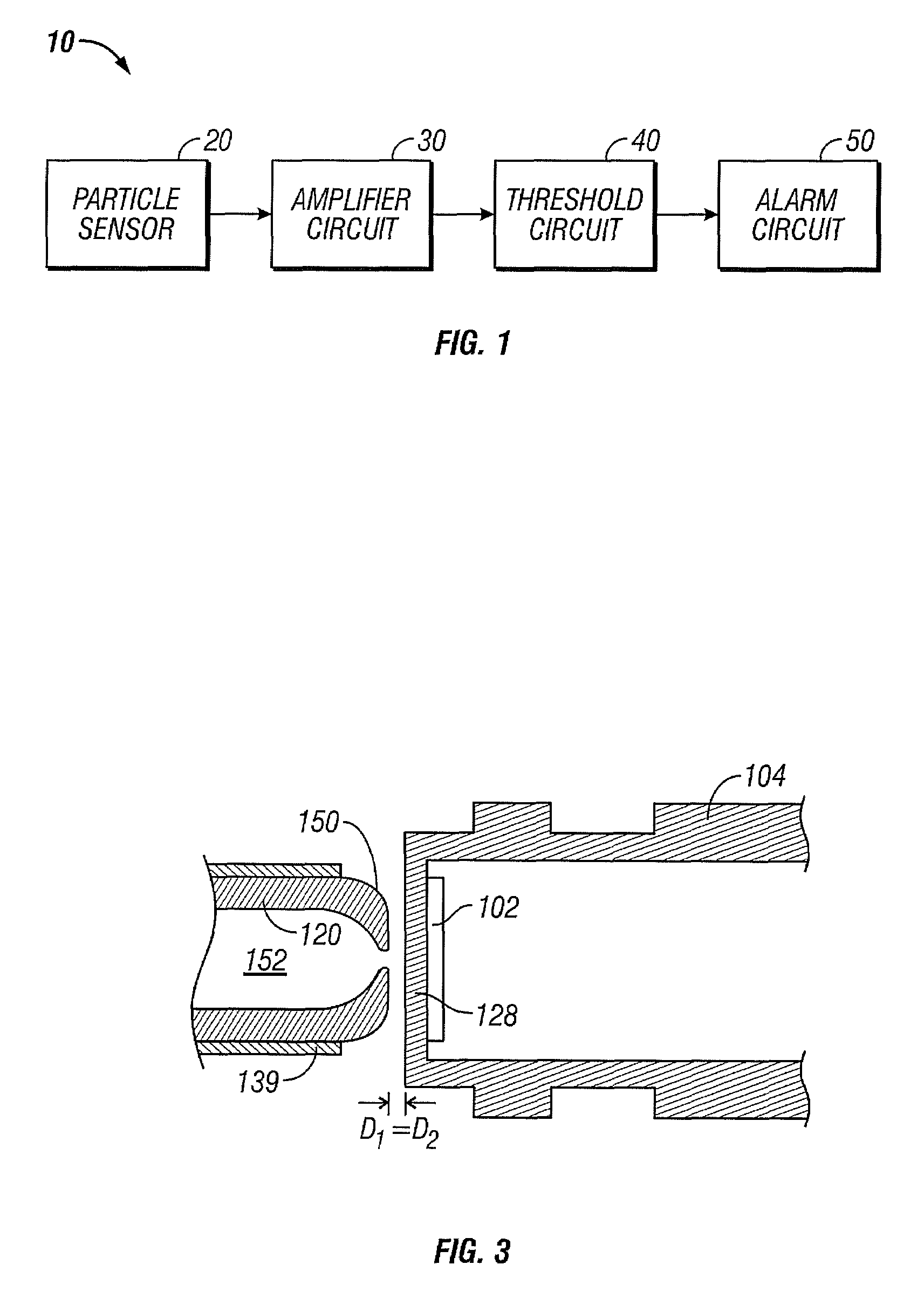Acoustic particle alarm including particle sensor
a particle sensor and acoustic particle technology, applied in the field of acoustic particle alarms, can solve the problems of not providing indicators, not providing means to ensure, electrical signals produced by impinging particles are not necessarily provided, etc., to reduce the amount of acoustic coupling, and maximize the concentration of particles impacting the sensor
- Summary
- Abstract
- Description
- Claims
- Application Information
AI Technical Summary
Benefits of technology
Problems solved by technology
Method used
Image
Examples
Embodiment Construction
[0037]In the following paragraphs, the present invention will be described in detail by way of example with reference to the attached drawings. Throughout this description, the preferred embodiment and examples shown should be considered as exemplars, rather than as limitations on the present invention. As used herein, the “present invention” refers to any one of the embodiments of the invention described herein, and any equivalents. Furthermore, reference to various feature(s) of the “present invention” throughout this document does not mean that all claimed embodiments or methods must include the referenced feature(s).
[0038]Particle impacts occur when the motion of a particle-containing fluid is changed by a modification of the flow, such as an obstruction or a bend in a conduit. The resultant particle impacts may be detected due to the transfer of momentum to an acoustic sensor within the conduit. Referring to FIG. 1, the present invention provides an acoustic particle alarm 10 i...
PUM
 Login to View More
Login to View More Abstract
Description
Claims
Application Information
 Login to View More
Login to View More - R&D
- Intellectual Property
- Life Sciences
- Materials
- Tech Scout
- Unparalleled Data Quality
- Higher Quality Content
- 60% Fewer Hallucinations
Browse by: Latest US Patents, China's latest patents, Technical Efficacy Thesaurus, Application Domain, Technology Topic, Popular Technical Reports.
© 2025 PatSnap. All rights reserved.Legal|Privacy policy|Modern Slavery Act Transparency Statement|Sitemap|About US| Contact US: help@patsnap.com



